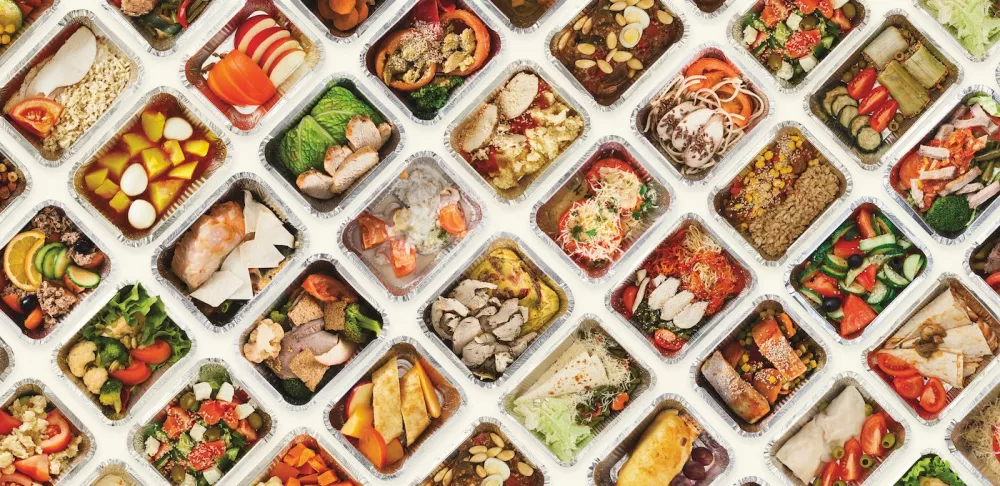Ghost restaurants are food concepts void of service windows, counters or dining rooms. The menu is prepared in a kitchen and delivered by the company or a third-party service to the customer. Dean of Restaurant & Hospitality Management Rick Camac explores this strategy, also referred to as dark kitchens, and its potential for sustainability, growth and profitability.
In New York City, Eater reports that Sweetgreen will use the new Zuul Kitchens in Soho, while West Coast companies like Canter's Deli use Kitchen United near our campus in Pasadena, California.
The increasingly popular approach bucks long-held financial models and necessary operational ratios for brick-and-mortar restaurants. At the turn of this century, occupancy cost (basically, rent plus water and sewer, etc.) in New York City could account for 6% of revenue (total top line sales). Cost of Sales (COS) would likely be 26-28% and payroll (prior to benefits, matching taxes) would be about the same. Within a handful of years (but still prior to the financial crisis of 2008) occupancy crept up to 10%. Going with that model, a fairly standard goal would be 55% prime cost (payroll plus cost of sales) and 10% occupancy. Add 10% for rent, 6% for payroll benefits and 15% for all other profit and loss (P&L) line items such as maintenance, repairs, gas and electric, marketing, supplies, etc. comes to 86% total expenses, arriving at 14%: a margin most restaurants would be extremely happy with because they’d earn $140,000 on each $1 million of sales.
Those ratios have evolved. Today, cost of sales could easily be 32% or more, payroll the same (32% plus 6% benefits) or more, based on new minimum wage laws; add 12-14% occupancy to the same other P&L items (15%), and the budget will be over 90%, possibly by a good bit. So, now one could easily be netting $50,000 (5%) or less on $1 million in sales. That’s assuming no extraordinary issues take place.
There are obvious advantages — and disadvantages — to opening or participating in a ghost operation. Adding the concept to an ongoing operation could make a lot of sense, too. Uber Eats, where I consulted, is pushing this idea hard on its new and existing clientele. According to recent statistics, delivery only is expected to grow by more than 15% through 2021. This month, The New York Times reported the rise of the virtual restaurant (a synonym for these types of operations). One operator said his delivery operations went from 25% of his overall business to 75% with a ghost model. There are clear signs that virtual restaurants are taking up a bigger chunk of your dining dollar with companies like Uber driving the change. Since 2017, the ride-share and meal delivery brand has helped start 4,000 virtual restaurants, like Mr. Lopez, which are exclusive to its UberEats app. New and existing operators alike are jumping on the bandwagon.
Let’s examine each scenario.
Add a ghost operation to an existing entity for incremental revenue from an online menu:
The pros:
- You may be able to use existing personnel.
- You may be able to occupy an unused portion of your operation for storage and prep or use overnight hours (which would still save on the ever-rising occupancy cost).
- You will gain incremental revenue.
- Your personnel may learn another skill or cuisine.
The cons:
- You need to retrain or add staff and teach a new skill.
- You may overburden your existing staff, causing burnout and other issues.
- The new menu may not sell well.
- You’re likely leaving the delivery of this product to third parties, which takes some control out of your hands and can be expensive. There will be much less customer interaction (short of the problems, which you will hear about).
Open a ghost restaurant from scratch:
The pros:
- You are starting fresh with an offering you know and understand.
- You will save greatly on occupancy cost as you would likely take more out of the way space or upper floor space.
- You will require less space without in-house dining. As an example, If a restaurant is 1,000 square feet and costs $150 per square foot (let’s assume the kitchen takes up 40% of the space), that would be $150,000 per year in rent. Now, if all you needed was the kitchen 40% of that cost would be $60,000. Bring it one floor up and it's likely $20,000-30,000.
- You do not need front-of-house staff. So, if your restaurant payroll on $1 million is 30%, now, without any FOH staff, it’s likely 20%, another $100,000 (at 10% savings) straight to the bottom line.
- You will likely gain revenue with a new business.
The cons:
- If you don’t have a known entity, you’ll have to work on developing your brand.
- Your business strategy likely is relegated to the internet and social media.
- You’re likely leaving the delivery of this product to third parties, which takes some control out of your hands and can be expensive.
- There will be much less customer interaction (short of the problems, which you will hear about). This makes building customer loyalty a challenge.
- You are more susceptible to pricing pressures and can get squeezed by them.
- Many food items do not travel well.
Trends such as fast-casual, quick-service, meal delivery kits and delivery-only concepts tell us that diners are drawn to new ways of dining beyond sitting in a restaurant for untold hours. Americans want food faster and healthier with better value propositions, and the industry growth potential is huge.
This month’s issue of QSR Magazine predicts that delivery will grow to $365 billion annually by 2030. Third-party delivery apps grew by 6 million users from 2019 to 2020! If run well, these should be quite profitable. Recent quotes for net operating income (basically, profit) estimate 15-40% for concepts that wipe out costly front-of-house payroll and dramatically lessen occupancy cost. Those profits stand a chance to grow further by utilizing economies of scale and using commissary kitchens, which fuel smaller kiosks within an area or region.
Whether coined ghost, virtual or delivery-only restaurants, these business models for food to-go are here to stay.
Learn more about ghost restaurants in Rick's next class or pursue a career in food business with ICE's Restaurant & Culinary Management program.




